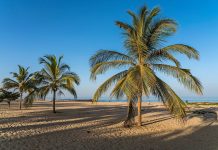By Mustapha Jallow
It is now 28 days since the Amdalai/Karang border was closed to all vehicular traffic which was later followed by all the other  Gambia-Senegal official entry points as a result of protest by Senegalese road transport unions against a new tariff of FCFA 400,000 (over D26,000) introduced by Gambian customs on all Senegal registered trucks.
Gambia-Senegal official entry points as a result of protest by Senegalese road transport unions against a new tariff of FCFA 400,000 (over D26,000) introduced by Gambian customs on all Senegal registered trucks.
Visiting the Amdalai/Karang border on Friday, 11 March 2016, to observe the situation and the impact of this closure on traders, this reporter met with one Mr. Mbye, a Gambian who normally travels to Dakar, Senegal, to buy chicken feed for his poultry, to share his experience.
According to Mr. Mbye, the continuous closure of the border to vehicular traffic is increased cost for him as he has to pay twice to transport the chicken feed. “I have to hire a truck from Dakar to Karang and then unload the feed which is transferred to another truck at Amdalai on the Gambia to its final destination in Serekunda which is extra cost and very expensive,” lamented the poultry breeder.
Mr. Mbye called on the authorities in the two countries to sit down and resolve this problem as a matter of urgency to save the small economic operators like him who are being directly affected by the border closure.
This impact on small traders was also confirmed by Ndeye Diouf, a Senegalese woman, who for many years has been buying goods from Gambia and selling them in Senegal.
Madam Diouf explained that her business now is almost brought to a halt as she cannot afford the cost to transport goods from the Gambia to Senegal.
She also called on the political leaders in Gambia and Senegal to resolve the matter for the benefit of their two peoples and economies.
However, this once thriving Amdalai-Karang border area, which used to be a sight teeming with travellers, motorists, truckers, traders of all sorts, is now without this busy traffic of people and vehicles.
Still now all the passengers crossing into either direction have to walk a short distance before getting on to waiting commercial vehicles, horse drawn carts or scooters (motor bicycles) with or without their luggage to take them to the car parks and which in the case of Senegal is almost a kilometre away from the border.




















